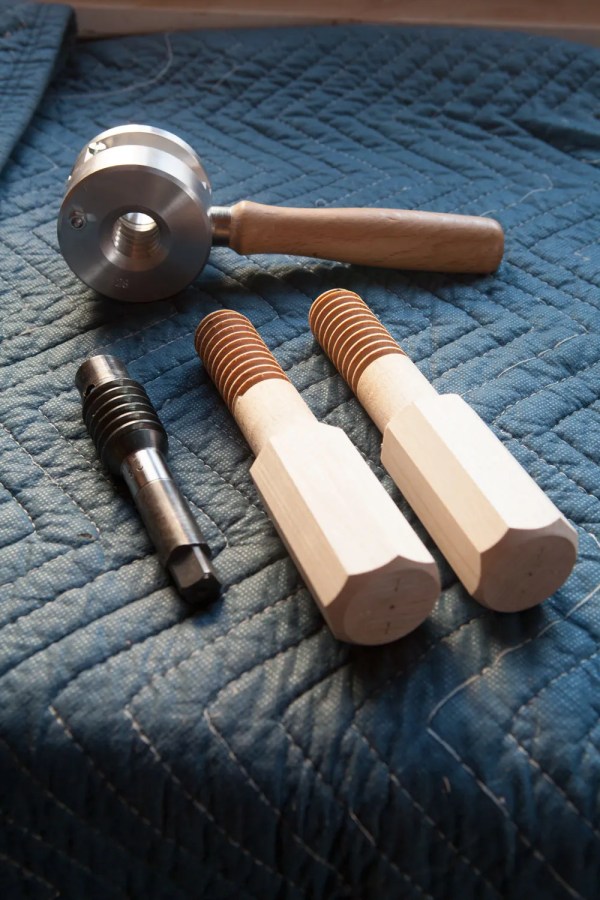
After struggling with the inexpensive wood-threading tools from China and Taiwan, I have been looking for a better way to tap and thread hardwoods.
I purchased the Big Threader by Beall Tool Co. a couple years ago to try it out. It works brilliantly, but you need a router to power it. And setting the cut is fussy to get the results you want. It’s a lot like a router-powered dovetail jig in that once you get it set up, it’s brilliant. But the setup is a pain when you want to make one or two threaded rods.
While interviewing Jennie Alexander last May, she showed me her German tap and wood threader, a tool she has had for many years and worked perfectly. I’d seen this threader on the Dieter Schmid web site many times before, but the price was too high for me to take a gamble on it.
But after talking to Jennie at length, I bucked up and put the 28mm (approximately 1-1/8”) kit in my shopping cart (see all the sizes here). My rationale? I’d already spent $300 on non-functioning wood-threading kits, perhaps I should have just bought this German one at the outset.
Dieter Schmid has a lot of customers in North America, so shipping was fast and easy. I had the tool in about two weeks.
The threader and tap are extremely well made. And after experimenting with it a lot this winter, I can recommend it for those who can afford it. It makes crisp threads with little effort. Here are some helpful details if you follow me down this path.
The tool is metric, and while you can get away with Imperial tooling, you’ll be better off switching your brain to metric for this operation.
The wooden dowel should be 28mm or slightly undersized for the male threads. I turned my dowels from straight-grain maple to 1.10”, which slipped right into the threader with no wobble. This makes for crisp threads.
The nice thing about the threader is it makes threads with a square tip – not triangular. These square, acme-like threads are more durable. The downside to the threader is that it leaves a 1-1/2” long area of a handle unthreaded, as you can see in the photo above. This is caused by the long collar of the threader. The long collar improves the accuracy of the tool, so it’s a trade-off.
The tap works with a 23mm-diameter hole. I recommend buying a 23mm Forstner instead of using 1-1/8”. You can buy these on eBay for less than $10. The tap cuts cleanly in both hardwoods and harder soft woods, such as yellow pine.
My only caveat to the tap is I recommend chamfering the entry hole or the leading cutter of the tap can, on occasion, splinter the work.
One last detail about the tools: Jennie recommends using tallow on the cutter and I second that recommendation. The tallow makes the job easier and prevents chips from jamming into the V-cutter, which will spoil the dowel.
So I’m happy to report that my search for a good wood-threading kit is over. It was an expensive journey, but I now have an excellent working tool that doesn’t require a router.
— Christopher Schwarz